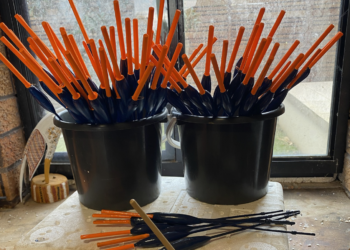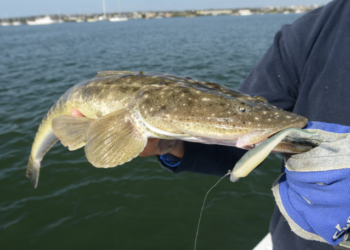Knots & Rigs by Mark Williams
FISHING certainly isn’t getting any easier. Like many anglers these days, I’m always looking for ways to give myself an edge. “Continuous improvement” is the buzz term in corporate circles. It basically means to always be on the lookout for ways to get better at what you do, which certainly applies to fishing.
Wind-on leaders have been around for quite a while now, but some offshore anglers are still somewhat suspicious of them. Over the years I’ve heard plenty of sad stories of shonky home-made wind-ons failing on big fish. I’ve recently been field testing the range of Rovex Wind-On Mono leaders and the advantages these products offer for bluewater fishing are compelling. My testing has largely been done while deepwater kingfish jigging with my good mate Scotty Thorrington from Haven Charters on the NSW Central Coast. The 46kg Rovex Wind-On Mono leaders have proven ideal for this most testing style of sportfishing. They speed up and simplify the rigging process immeasurably, which is a godsend when you’re sitting on top of an underwater pinnacle stacked up with jig hungry hoodlums and you get blown away first drop!
When this happens, you want to get rigged and back into the game fast. Wind-ons allow you to do this. The other thing I love about wind-on leaders for deepwater jigging is there’s no bulky leader knot colliding with your rod tip guide at high speed. It usually only happens when you’re distracted and aren’t concentrating on the job, but I’m paranoid about blowing the ceramic insert out of the tip of my fave Fin Nor Offshore 50lb jig rod in the middle of a hot bite.
The wind-ons eliminate that problem entirely.
Check out a how-to video on the Fisho site at http://www.fishingworld.com.au/news/video-wind-on-leaders-explained
for more details about wind-ons.
Rigging A Wind-On
Step 1: The Bimini Twist
Rigging up to use wind-on leaders is ridiculously simple. All you require is a
short double tied in the end of your main line. The Bimini Twist is the ideal means of creating the double in your main line. It can be tied relatively quickly and when done correctly provides a 100 per cent strong transition between your main line and wind-on leader. When deepwater kingfish jigging with GSP braided lines I employ a minimum of 50 turns in my Bimini Twist; some guys do up to 70 turns. I also like to finish them off with a series of half hitches followed by a Rizzuto finish. Short length doubles can be tied relatively easily by an individual angler in a small boat, but longer doubles may require two anglers to complete the Bimini. A professionally filmed Online How To Vid at http://www.fishingworld.com.au/news/video-how-to-tie-a-bimini-twist demonstrates the correct way to tie the Bimini Twist.
Step 2: The Cat’s-paw Knot
This is simply a loop-to-loop connection between the doubled mainline and the braided loop on the wind-on leader. It is also a 100 per cent strong connection that travels through rod guides smoothly, courtesy of the fact that the connection has no tag ends protruding from it. To eliminate the risk of a girth hitch being formed, I prefer to take the tag end of the wind-on leader through the loop-to-loop connection twice. Be sure to adjust the double line loop and wind-on loops to ensure each of the legs are even during the tensioning process prior to fully pulling the connection up. Once you have your wind-on leader rigged up and ready to go it’s a relatively simple task to tie or crimp your lure, jig or hook to the leader end.
A video showing how to tie a Cat’s Paw is at http://www.fishingworld.com.au/news/video-knot-tying-the-cat-s-paw.





















